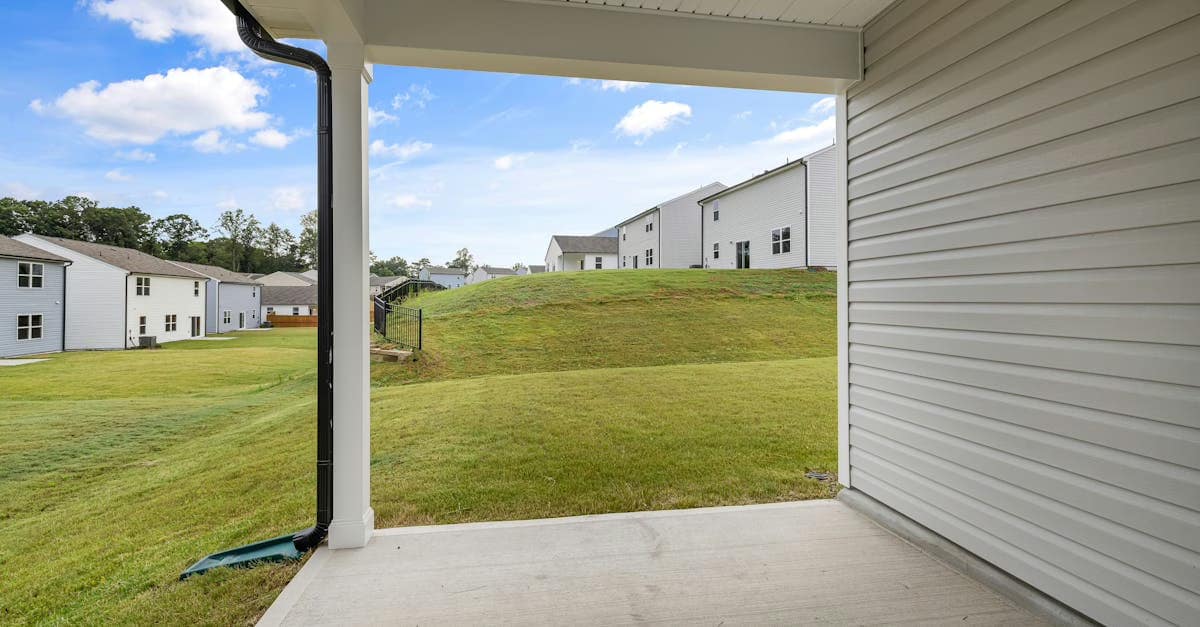Mastering the HO5 Homeowners Policy: Your Broker’s Essential Guide
Ho5 homeowners policy understanding is more than just a checkbox for real estate brokers; it’s a critical component of compliance, risk management, and providing exceptional client service. As a former Realtor myself, I know the complexities that arise during a transaction, and navigating insurance requirements can be a significant operational pain point for brokerages. Ensuring agents and staff, including transaction coordinators, grasp the nuances of policies like the HO5 can prevent costly delays and potential liability issues. In today’s fast-paced market, leveraging tools like ReBillion.ai for AI-powered transaction coordination and virtual assistance becomes essential not just for efficiency, but for managing these intricate details accurately.
Why Brokers Need to Master the HO5 Homeowners Policy
An in-depth knowledge of the ho5 homeowners policy is crucial for real estate brokers. While agents aren’t insurance agents, a fundamental understanding allows them to guide clients effectively, anticipate potential issues during escrow, and avoid missteps that could lead to transaction breakdowns or errors & omissions (E&O) claims. This is especially vital in high-value properties or areas with unique risks, where the comprehensive coverage of an HO5 policy is often preferred or required by lenders.
Understanding the HO5: Open Perils Coverage
The defining characteristic of an ho5 homeowners policy is its “open perils” coverage for both the dwelling (Coverage A & B) and personal property (Coverage C). This means that the policy covers damage from any cause unless that cause is specifically excluded in the policy language. This is a significant difference from the more common HO3 policy, which typically offers open perils coverage only for the dwelling and “named perils” coverage for personal property, meaning it only covers damage from a list of specific events like fire, windstorm, or theft.
Key Coverage Components of an HO5 Policy
An HO5 policy typically includes standard homeowners insurance coverages, but often with higher limits and the broader open perils scope:
- Coverage A: Dwelling: Covers the structure of your home on an open perils basis.
- Coverage B: Other Structures: Covers detached garages, sheds, fences, etc., also on an open perils basis.
- Coverage C: Personal Property: Covers your belongings (furniture, clothing, electronics) on an open perils basis. This is a key differentiator from the HO3 policy. Often includes replacement cost coverage, not just actual cash value.
- Coverage D: Loss of Use: Provides additional living expenses if your home becomes uninhabitable due to a covered loss.
- Coverage E: Personal Liability: Protects you if you are found liable for bodily injury or property damage to others. Essential for managing risk.
- Coverage F: Medical Payments: Covers medical expenses for guests injured on your property, regardless of fault.
HO5 vs. HO3: What Brokers and Clients Need to Know
Educating agents and clients on the differences between HO5 and HO3 is vital. While an HO3 is sufficient for many situations, the broader coverage of the HO5, particularly for personal property, offers superior protection. Lenders may sometimes require an HO5, especially for high-value homes. Brokers should ensure their transaction coordinators are trained to identify policy types when reviewing documentation.
Common Exclusions in an HO5 Policy
Even with open perils coverage, HO5 policies have exclusions. Common exclusions include:
- Earthquake
- Flood (requires a separate NFIP policy)
- Mold (often limited coverage or excluded if preventable)
- Pest infestations
- Sewer backup and sump pump overflow (often available as an endorsement)
- Damage from lack of maintenance
- Acts of War or Nuclear Hazard
Understanding these exclusions is critical for brokers advising clients, especially regarding potential risks in their specific location.
Integrating Insurance Knowledge into Brokerage Operations
For a real estate brokerage, ensuring that understanding of policies like the ho5 homeowners policy is integrated into operational workflows is key to efficiency and compliance. This is where smart back office tools and automation shine.
Leveraging AI and Automation for Compliance and Efficiency
AI-powered transaction coordinators and virtual assistants can play a significant role in managing the insurance aspects of a transaction. They can be programmed to:
- Flag deadlines for obtaining homeowners insurance.
- Automatically request proof of insurance from clients or agents.
- Validate that the policy type (e.g., HO5, HO3) and coverage limits meet lender requirements or best practices.
- Store insurance documents securely within the deal file in the CRM.
- Alert transaction coordinators or compliance officers to potential issues.
This automation reduces manual workload, minimizes the risk of human error, and ensures a consistent compliance process across all transactions. ReBillion.ai’s AI transaction coordinators are designed to handle these repetitive, detail-oriented tasks, freeing up your team.
Training Agents and Staff on Insurance Basics
Brokers should provide agents and administrative staff with basic training on homeowners insurance policy types, focusing on the differences between HO3 and HO5, common coverages, and key exclusions. This empowers them to answer basic client questions and identify when a client needs to consult a licensed insurance professional. Training resources can be stored in a centralized knowledge base accessible via a smart back office system.
Virtual assistants can help manage agent training schedules or distribute educational materials. AI virtual assistants for real estate brokerages are adept at managing communication and information flow.
Actionable Tips for Brokers Regarding HO5 Policies
Here are 5 immediate steps brokers and their teams can take to enhance their handling of homeowners insurance, particularly the HO5 policy:
- Create a Transaction Checklist Item: Add a mandatory step in your transaction coordination workflow to verify the type of homeowners policy obtained by the buyer (HO3 vs. HO5) and check key coverage limits against lender requirements or internal standards.
- Develop Agent Quick Reference Guides: Provide agents with a simple guide outlining the core differences between HO3 and HO5 policies and a list of common exclusions clients should be aware of. Emphasize they are not giving insurance advice but facilitating information.
- Automate Insurance Tracking: Implement a system (like a smart CRM or transaction management tool) that automatically tracks the status of the buyer’s homeowners insurance and sends reminders to the agent or TC as the closing date approaches. ReBillion.ai offers workflow automation features for this.
- Foster Relationships with Insurance Professionals: Build a network of trusted insurance agents you can refer clients to. Ensure these agents understand the nuances of HO5 policies and coverage needs specific to your market.
- Conduct Regular Compliance Audits: Periodically review closed transaction files to ensure insurance documentation was correctly obtained and filed, checking specifically for verification of policy type and coverage. AI-powered tools can assist in these audits.
Why Mastering Insurance Matters for Brokerage Operations and Finance
Beyond compliance, a brokerage’s understanding of insurance, including the ho5 homeowners policy, directly impacts its operational efficiency and financial health. Transactions involving complex insurance requirements can cause delays if not handled correctly, impacting cash flow and agent commission timelines. More importantly, misunderstandings or failures to flag insurance issues are a leading cause of E&O claims against brokers and agents. Claims are expensive, disruptive, and damage reputation.
By proactively training staff and using tools like ReBillion.ai to automate insurance-related tasks, brokerages can significantly reduce their risk exposure. Streamlined processes mean faster closings and less time spent resolving preventable issues. This not only saves money but also allows agents and TCs to focus on revenue-generating activities and providing excellent service, ultimately contributing to the brokerage’s growth and profitability.
Key Points on HO5 for Brokers
The HO5 policy offers superior, open-perils coverage for dwelling and personal property compared to the HO3. Brokers must understand its nuances, common exclusions, and how it impacts transactions. Leveraging AI transaction coordinators and automation can streamline verification and compliance, mitigating risk and improving operational efficiency in the back office.
FAQs: People Also Ask About HO5 Policies
What is an HO5 homeowners policy?
It’s a comprehensive home insurance policy providing ‘open perils’ coverage for both the dwelling and personal property, meaning it covers all damages unless specifically excluded.
How is an HO5 different from an HO3?
An HO3 uses ‘open perils’ for the dwelling but ‘named perils’ for personal property, covering only listed events. HO5 extends ‘open perils’ to personal property for broader coverage.
Do all lenders require an HO5 policy?
No, most lenders require at least an HO3. An HO5 might be required for high-value properties or preferred for its superior coverage, but it’s not a universal requirement.
Why should a real estate broker understand HO5?
Understanding HO5 helps brokers advise clients, anticipate transaction issues, manage risk, avoid E&O claims, and ensure compliance with lender requirements, improving overall transaction efficiency.
Does an HO5 policy cover flood damage?
No, standard HO5 policies typically exclude flood damage. Separate flood insurance, often through the NFIP, is required for flood coverage.
Resources
Explore how ReBillion.ai can enhance your brokerage operations and compliance:
- ReBillion.ai Official Website
- ReBillion.ai Blog for Real Estate Professionals
- Learn About AI Transaction Coordinators
- Discover AI Virtual Assistants
- Contact ReBillion.ai
Conclusion
Mastering the intricacies of insurance policies like the ho5 homeowners policy is indispensable for real estate brokers committed to minimizing risk, ensuring compliance, and delivering superior service. By integrating this knowledge into structured workflows and leveraging cutting-edge real estate automation and AI tools for real estate agents and brokerages, you can transform a potential pain point into a streamlined operational strength. Proactive education and smart technology are the keys to navigating the complexities of modern real estate transactions effectively.
ReBillion.ai helps real estate brokers streamline operations with AI-powered transaction coordination, virtual assistants, and intelligent back-office automation. Whether you’re scaling your team or closing more deals, ReBillion.ai is built to simplify your brokerage’s compliance, efficiency, and growth. Visit ReBillion.ai to explore solutions or schedule a consultation.


